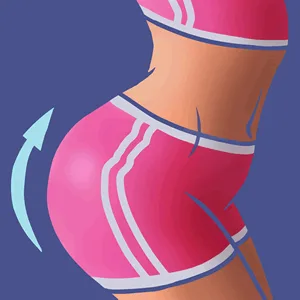As women age, it’s no fun discovering new things that can “head south” thanks to gravity and the passag of time. You exercise and eat healthy, but still find yourself leaking a little when you laugh or sneeze. Those bothersome bladder issues are kicking in. Or maybe certain movements make you uncomfortably aware that your uterus is drooping a bit.
While a complete organ descent requires medical intervention, many pelvic floor issues responding well to physical therapy first. I discovered some at-home gadgets that strengthen the muscles holding all our bits in place for a non-invasive boost: the pelvic floor trainer and hip exerciser. Granted, sticking anything inside your private parts or trapping an external object between your thighs may sound bizarre. But I promise these handy helpers WILL transform your pelvic wellness from flabby to firm!
First, let’s address the elephant in the room – the pelvic floor trainer does resemble an oversized tampon. But slide it in just like your monthly visitor and you likely won’t even remember it’s there. The sensors connect to a monitor allowing you to literally SEE your pelvic power as you contract muscles against the device. It’s like a personal trainer for down south! This real-time biofeedback guarantees proper form as it tracks and logs your measurable progress in vaginal dexterity.
The pelvic floor trainer is an intriguing device. It actually measures the strength of your contractions as biofeedback. This allows you to gauge progress in pelvic floor strengthening. Using the trainer requires inserting the device, which some may find uncomfortable initially. With consistent use and pelvic muscle contractions, it can provide a very focused workout to this area. However, the sensors must be replaced periodically so costs can add up over time.
With a few sets daily while multi-tasking around the house, I felt definite tightening in under two weeks. My husband even complimented how snug I felt down there (sorry, is that TMI? But such rave reviews!). I’ll admit replacing sensors gets spendy, yet watching your effort convert to quantifiable outcomes is priceless motivation.
If manually monitoring yourself isn’t appealing, go for the hip exerciser instead. Positioned externally between your thighs, you simply squeeze inward while counting steadily. Rather than directly toning pelvic muscles, you strengthen surrounding areas like inner thighs and hips. This engages core support structures that ultimately lift and pull inward on descending organs. Of course you miss out on precise biofeedback, but there’s something satisfying about feeling muscles burn with old-school reps!
The hip exerciser takes a different approach, placed externally between the knees or thighs. By squeezing your legs inward, you create an isometric contraction that engages not just the inner thighs but also activates the pelvic floor muscles. There is no cost for replacement parts which is a positive element. However, because it focuses on a wider area of muscles rather than just the pelvic region, some may find it less effective at truly targeting and strengthening the pelvic floor.
I suggest giving both a test drive – the internal trainer for precise pelvic targeting and the external hip tool for supplementary strength building. Maybe alternate devices weekly? Mixing the high-tech biofeedback model with a manual shaper that requires real muscle work could yield best results. Plus it saves your sanity versus endless repetition with a single method!
Don’t suffer “down there” woes in silence, ladies! Reclaim control from leaky bladders, inconvenient prolapses and more by employing these clever exercise assistants. Give your pelvic floor the UPLIFT it deserves – your whole body will thank you!
In the end, personal preference will determine choice between these options. The pelvic floor trainer provides biofeedback and a customized workout isolated on the pelvic floor. But insertion and costs for replacements may discourage some. The hip exerciser skips insertion and targets a wider zone of muscles, but could require more reps due to indirect action on the pelvic floor itself. Trying both can help determine which creates an optimal muscle workout while suiting personal comfort level as well.



Leave a Reply